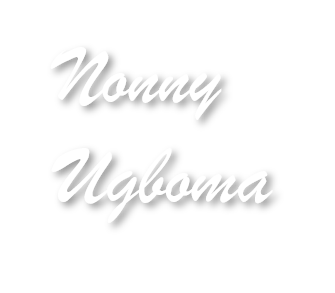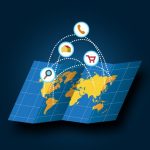Time to Design a Circular Economy
As the year 2020 comes to an end and we contemplate a post- Covid-19 world, it is important that developing countries embark on missions to rebuild their economies. In doing this it cannot be business as usual – we would need to re-think our conventional models – such as the degenerative linear model which we currently run, by bull-dozing our way through life like a caterpillar, wastefully taking from the earth to make stuff which we use and consume before discarding wastes in landfills. This was the theme of the
This linear model is unsustainable if we truly want to leave a better world for future generations.
It is imperative that we adopt the alternative and only viable model- circular economy model. This is a regenerative, distributive and inclusive model which the Ellen MacArthur Foundation also calls the Butterfly model.
The two wings of the butterfly provide us with two key areas to focus on when designing for a circular economy. The first wing looks at Biological nutrients like soil, plants- etc which we take, make into something, consume the items and then instead of discarding the remnants we regenerate the waste by capturing value at each stage of decomposition. The other wing looks at Technical nutrients like plastics, synthetics and metals which are not used up and discarded, but restored, repaired, reused, refurbished and recycled.
The key question is- how do we transform our economy to be more regenerative by design to follow a more circular model because the linear model is actually counter to nature which is naturally regenerative- “the Circle of Life”, according to Mufasa in the Lion King.
To start off with, there needs to be a clearly defined roadmap drawn up by government and key stakeholders that will chart a way forward to move us away from the degenerative linear economy to a more inclusive and regenerative circular economy.
Secondly, different sectors and actors need to work collaboratively with government to co-create innovative solutions byfollowing a mission-oriented approach, as advocated by Economist, Mariana Mazzucato in the spirit of strategic partnerships in line with SDG 17 which highlights the importance of partnerships to solve social problems. The Lagos State Circular Economy Roundtable that took place earlier this month has set the tone and created a veritable platform for co-creation of solutions.
Thirdly, deliberateness about achieving circular economy, not just because it will create social and environmental value, but because of the tremendous economic value that it can create. To give us an idea of how huge the economic value is for Europe alone, according to a Mckinsey report published in 2015, circular economy could potentially generate a net economic benefit of €1.8 trillion by 2030. Others, like Accenture have also estimated that globally, the total economic value from circular economy is in the region of $4.5 to $5 trillion. Therefore, one would argue that it is not only good for our earth and for future generation but that it definitely pays to go circular.
Fourthly, for circular economy to be a reality one thing we should not say is “let’s focus on development first” or “let’s become an advanced economy first” or “let’s catch up first before we start talking about circular economy”. Now is the time to design or re-design for a more inclusive and regenerative state/country/world for a better tomorrow.
Once we have a changed mindset there are numerous opportunities to solve problems in different spheres. Also, there needs to be the right sets of policies and regulations in place to ensure risks and rewards are shared to enable circular economy to thrive. One strong clear opportunity that embodies circular economy is in the waste management system; we all know how much damage is done to the environment by poor waste management- from flooding to poor hygiene and negative health consequences. The Waste Management system needs to be redesigned- collaboratively end-to-end towards attracting relevant skills and required investments. It also requires a change in the attitude of all citizens towards waste disposal and product consumption.
A visit to the Olusosun landfill in Ojota, the largest landfill in Africa and one of the largest in the world is an eye-opening experience and a good illustration of there being wealth in waste. The landfill accommodates an estimated 60% of the waste trucks from all over Lagos and trucks bring in unsorted wastes for dumping and economic activities. Each of the estimated 1,500 scavengers that live there generate on average N4,000 daily (average daily total of N6,000,000) from selling goods they retrieve from the site.
This huge potential for recycling and re-using of waste in Lagos is a strong indication that it is key to design waste-to-wealth systems that will be good for the environment, create social value by employing people and economic value through income earned.
Let me share a practical illustration-
Over ten years ago, the MTN Foundation implemented a project in Aleshinloye market in Ibadan, Oyo state, where members of academia from the University of Ibadan fabricated machines that were used in the recycling plant established in the market. Biological and plastic wastes were collected from the market – ‘pure water’ sachets turned into pellets sold; other plastics were cut into chips and sold to be used in other plastic processes and the organic wastes turned to fertiliser, bagged and sold to the agriculture sector. Through this small initiative, people were engaged, and the market was kept relatively clean. This project was eventually handed over to the market association. Imagine replicating this model in our communities- this will create social, environmental and economic value.
Finally, the future requires us to leverage all available technology and payment platforms to promote circular economy in addition to improving industrial processes and waste management systems. Financial payment systems should also be regenerative by design and mobile payment platforms potentially can allow this to become a reality for a more inclusive society that addresses grass root societal challenges.
Business Day PublicationAuthor




